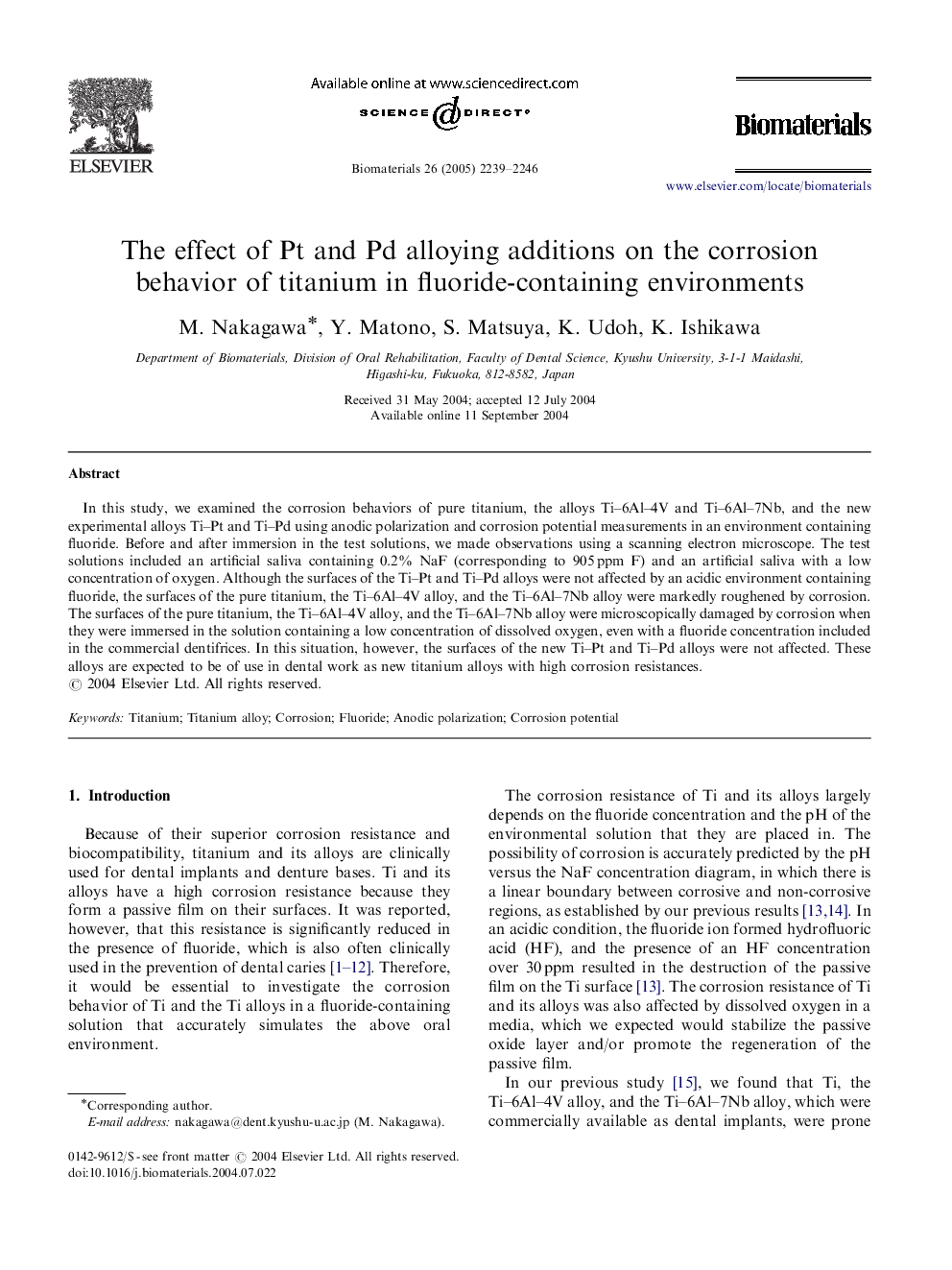| Article ID | Journal | Published Year | Pages | File Type |
|---|---|---|---|---|
| 12789 | Biomaterials | 2005 | 8 Pages |
In this study, we examined the corrosion behaviors of pure titanium, the alloys Ti–6Al–4V and Ti–6Al–7Nb, and the new experimental alloys Ti–Pt and Ti–Pd using anodic polarization and corrosion potential measurements in an environment containing fluoride. Before and after immersion in the test solutions, we made observations using a scanning electron microscope. The test solutions included an artificial saliva containing 0.2% NaF (corresponding to 905 ppm F) and an artificial saliva with a low concentration of oxygen. Although the surfaces of the Ti–Pt and Ti–Pd alloys were not affected by an acidic environment containing fluoride, the surfaces of the pure titanium, the Ti–6Al–4V alloy, and the Ti–6Al–7Nb alloy were markedly roughened by corrosion. The surfaces of the pure titanium, the Ti–6Al–4V alloy, and the Ti–6Al–7Nb alloy were microscopically damaged by corrosion when they were immersed in the solution containing a low concentration of dissolved oxygen, even with a fluoride concentration included in the commercial dentifrices. In this situation, however, the surfaces of the new Ti–Pt and Ti–Pd alloys were not affected. These alloys are expected to be of use in dental work as new titanium alloys with high corrosion resistances.
